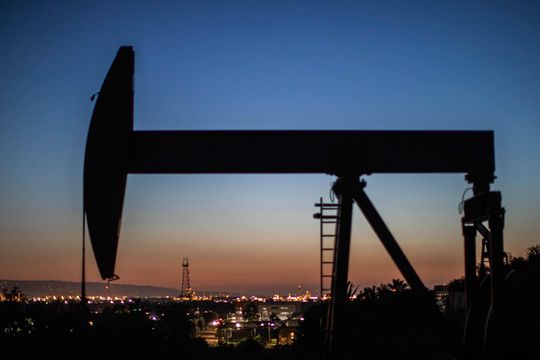Oil futures began the week with additional gains Monday, with the U.S. benchmark on track to finish above $80 a barrel as a global energy crisis continues to add to demand for crude.
West Texas Intermediate crude for November delivery CL00, 2.33% CLX21, 2.36% rose $2.32, or 2.9%, to $81.67 a barrel on the New York Mercantile Exchange. A most actively traded WTI contract hasn’t finished above $80 a barrel since Oct. 31, 2014, according to FactSet.
December Brent crude BRN00, 1.95% BRNZ21, 1.95%, the global benchmark, was up $1.95, or 2.4%, to $84.34 a barrel on ICE Futures Europe.
“Power concerns continue to offer support to the oil market. This is a trend we are likely to see continue through the winter,” said Warren Patterson, head of commodities strategy at ING, in a note.
Soaring natural gas prices and other woes have contributed to a European energy crisis. Gas prices pulled back from highs last week after Russian President Vladimir Putin said the country would honor its export commitments, but the fuel remains historically elevated.
In the U.S., natural gas futures NG00, -2.05% jumped 3.2% on Monday. Natural gas rose nearly 33% in September. Sky-high prices for the fuel are seen adding to demand for crude, with operators of gas-fired power plants, particularly in Asia, expected to switch to crude.
Oil-fired generation accounted for just 3% of world electricity in 2020, down from 11% three decades ago, noted analysts at Société Générale. In Europe, oil burning hasn’t accounted for more than 1.4% of European power generation at any point since 2018.
But in the Middle East and other areas, several utilities, including in Pakistan, Kuwait and South Kora, have started to boost oil purchases.
“It seems that competing fuels can still have an impact on the oil price at the margin, even though only a few utilities can source and use additional fuel oil on the spot markets to avoid LNG (liquefied natural gas) prices,” they said.
Oil didn’t initially rally alongside natural gas, perhaps because the prices for the two commodities had previously decoupled as they stopped directly competing with each other in terms of inputs, but also because worries over COVID-19 and economic uncertainties insulated crude, the analysts said. By late September, oil prices were trading at two-mnth highs thanks to strengthening demand and the lingering hit to output following hurricane damage in the Gulf of Mexico.

